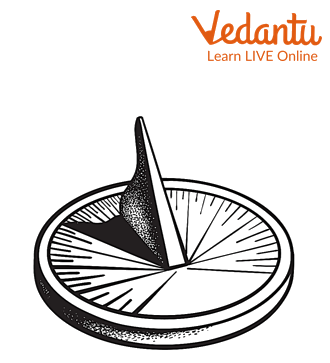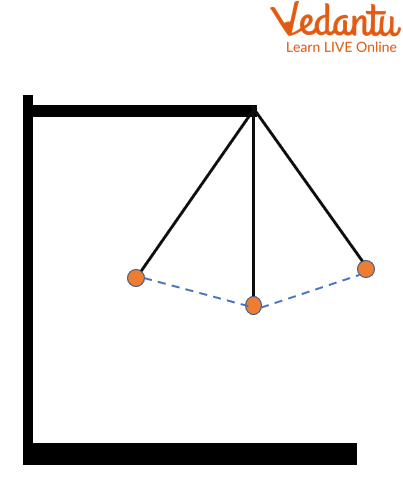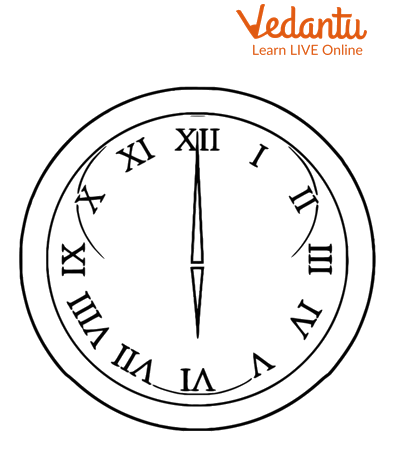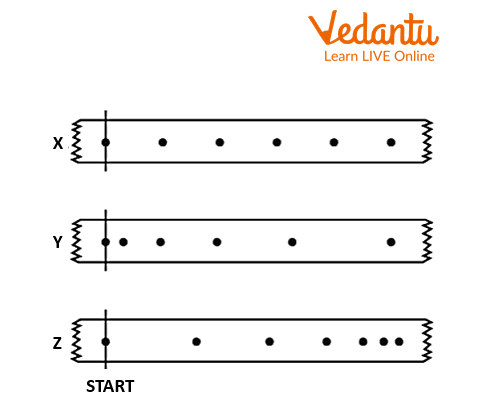




An Overview of Class 11 Physics Measuremen Of Time Experiment
What is Time?
Time relates to the fundamental physical quantities along with length and mass. Time can be measured using any occurrence that repeats after an equal amount of time. There are a lot of such repeating phenomena in nature. Such as the motion of the earth on its axis, the motion of the Earth around the Sun, and the motion of a wall clock or a pendulum. Projection of satellites is only possible because of precise measurement of time.
What is Second?
Previously, the second was specified as \[\dfrac{1}{{86400}}\]of the mean solar day, or the average time it takes for the Earth to rotate on its axis with respect to the Sun.
Table of content
Aim
Theory
Procedures and observations
Result
Aim
To measure time using the different devices.
Apparatus Required
Clocks
Watches
Ticker Tape Timer
Theory
Second is the SI unit of time (s). It has a scalar value. The precise duration of 9,192,631,770 radiation cycles associated with the change between the two hyperfine levels of the ground state of the caesium-133 atom is what defines the standard unit of time, the second (s).
Devices Used to Measure Time
1. Sundial - A sundial consists of a dial plate with hour lines engraved on it and a gnomon stick that sticks out at an angle. As the sun moves across the sky, it casts a shadow on the dial plate, which displays the time.

Sundial
2. Pendulum - Previously, a basic pendulum was utilised, which would oscillate at a steady pace as long as the bob's weight and the pendulum's length remained unchanged.

Pendulum
3. Clocks - These are mechanical devices to measure time. Its two hands' tips revolve in a circular motion that is graduated to represent hours and minutes.

Clocks
4. Atomic clocks - Atomic clocks have been created using atomic vibration. The clocks they control barely show a fraction of a second variation over thousands of years because these atomic vibrations are so consistent.
Procedures and Observations:
Measurement of Time by Clocks
The start time is either noted or the clock is configured to start at a specific time. Following this, the time event is allowed to take place, and the end time is recorded. The difference gives the necessary amount of time.
Accuracy - \[ \pm 1s\]
Measurement of Time by Stopwatches
The stopwatch is started concurrently with the time event. The stopwatch is stopped at the end of the event, and the time is recorded. The reading gives the required time interval. Some accurate stopwatches are more accurate because they are electrically tied to the time event.
Accuracy - \[ \pm 1s\](For laboratory investigations, a human reaction time restricts the stopwatch's accuracy to 0.1–0.4 s. Records with up to two decimal places should not be used.)
Measurement of time by Ticker Tape Timer
The tape is tied to an object, and it is possible to determine its motion from the dots on the tape.
The best way to demonstrate how to determine the state of motion from the resulting tape is with an example. The three tapes in the above diagram, labelled X, Y, and Z, each measure 1 m from start to finish. A ticker tape timer with a 0.1-second time interval creates the dots.

Ticker Tape Timer
The dots are uniformly spaced for X. The distance between each dot is 0.2 m because the length is 1 m. So, the calculations for speed will be,
\[Speed = \dfrac{{Dis\tan ce}}{{time}} = \dfrac{{0.2}}{{0.1}} = 2 m/s\]
Consequently, X stands for the tape from an object that is moving continuously.
As time passes for Y, the distance between the dots widens. The time in the calculation above is fixed because the dots are made with a predetermined time interval. As the gap between the dots widens, we'll experience an increasing speed. Consequently, Y represents the tape from an accelerating object.
As time passes for Z, the distance between the dots gets smaller. Z represents the tape from an object that is decelerating using the same logic as above.
Results
Measurements of time taken by different devices show that the number of intervals is equal every time.
Precautions
Check the tape to see if you can distinguish each distinct dot and the space between them.
The distance between the start and the stop should be measured in dot-to-dot spacing.
Use a stopwatch or stopclock, along with a new piece of tape.
Lab Manual Questions
1. According to the experiment, mention the most common feature in all clocks.
Ans: All clocks have a common feature in that they all display periodic motion.
2. According to the experiment, what is the accuracy of time when it (time) is being measured by clocks and stopwatches?
Ans: \[ \pm 1s\]
3. What happens to the speed of the ticker tape when the gaps between dots on the ticker tape increase?
Ans: The speed will increase when the dots on the ribbon of the ticker tape.
4. What makes a watch different from a clock?
Ans: A clock is large. One second is the lowest count. The size of a watch is smaller. Its minimum count is 0.1 or 0.2 seconds.
Viva Questions
1. Calculate the number of hours in a year.
Ans: There are 365 days in a year
1 day=24 hours
\[{\rm{For 365 days = 24 h}} \times 365 days = 8760 hrs\]
2. Describe how time was kept in the absence of pendulum clocks.
Ans: Before the pendulum was discovered, sundials, water clocks, and sand clocks were used.
3. A quartz clock or a pendulum clock from the two options provided. Mention what kind of clock requires an electric cell to operate.
Ans: Electric cells are needed for a quartz clock to function.
4. Identify the earliest time scale that was used to measure it.
Ans: The oldest ancient unit of time used for measurement is the solar day.
5. Describe the method used to calculate a month.
Ans: The interval between each new moon determines a month's duration.
6. Describe briefly how you will determine which object travels quickly and which is moving slowly.
Ans: When one thing moves farther in the same amount of time relative to another, we can say that the other object travels more slowly.
7. How would you determine what time it is if there was no clock?
Ans: By seeing the sun's shadow, we can determine the time of day without using a clock. For example, the sun's shadow is shorter at midday than at dusk.
8. Name a device which is used to measure short intervals of time.
Ans: The device used to measure the short intervals of time is a chronoscope.
9. Which watch will you use to precisely calculate brief intervals of time?
Ans: Extremely brief time intervals, of the order of 10(-9) seconds, are measured by atomic clocks and watches (nanoseconds)
The smallest time that a digital watch can measure is around 0.01 seconds. Digital stopwatches are used to measure minutes and seconds.
10. How would you determine what time it is if there was no clock?
Ans: By seeing the sun's shadow, we can determine the time of day without a clock. For example, the sun's shadow is shorter at midday than at dusk.
Practical Based Questions
1. How does the sundial work?
The shifting location of the moon in the sky creates a shadow at different spots designated on the sundial, which reveals the time of the day.
The sundial, which displays the time of day, uses the shadows it casts at various locations to indicate how the sun is positioned in the sky.
A shadow is cast at various locations indicated on the sundial that indicates the time of day due to the Pole Star's shifting position in the sky.
None of the above
Ans: B) The sundial, which displays the time of the day, uses the shadows it casts at various locations to indicate how the sun is positioned in the sky.
2. What does the sundial measure?
Distance
Area
Speed
Time
Ans: D) time
4. The time of the sundial is dependent on,
Position of the pole star
Position of the Moon
Position of the Sun
None of the above
Ans: C) Position of the Sun
5. Which axis does the dependent variable lie in general?
y-axis
x-axis
On any axis
None of the above
Ans: A) y-axis
6. what is the relationship between these quantities if we indicate speed by S, the distance by D, and time by T?
\[T = \dfrac{S}{D}\]
\[S = \dfrac{D}{T}\]
\[S = \dfrac{T}{D}\]
\[S = D \times T\]
Ans: B) \[S = \dfrac{D}{T}\]
7. Which device keeps track of how far a car has travelled?
Manometer
Motometer
Odometer
Speedometer
Ans: C) Odometer
8. What is the correct symbol to represent the speed of an object?
6 m/s
6 ms
6 ms-2
None of the above
Ans: A) 6 m/s
9. Which of the following is not a valid method for measuring time?
Simple Pendulum
A leaking tap
Blinking of eyes
None of the above
Ans: C) Blinking of eyes
10. Which of the following element(s) is/are taken into account when calculating time using a sundial?
The wind's velocity and direction.
shadow cast by the sundial in terms of length.
the sundial's shadow's direction of shadow.
Both B and C
Ans: D) Both B and C
11. Out of the following options, which one calculates time accurately?
Pendulum Clock
Sundial
Quartz Watch
None of the above
Ans: C) Quartz Watch
12. Which of the following options is not true about Sundial?
They operate according to the Sun's position.
At night, they are more accurate.
On cloudy days, sundial accuracy is marginally higher.
Both B and C
Ans: D) Both D and C
13. The time is measured by clocks and watches, which are based on
Rotational motion
Circular motion
Periodic motion
Rectilinear motion
Ans: C) Periodic motion
14. The tool used to measure time intervals in sporting events is known as
Quartz watch
Wristwatch
Stopwatch
None of the above
Ans: C) Stopwatch
Conclusion
The duration between the start and end of an event can be measured with time using different time-measuring tools. Interestingly, time was measured in the past using sundials, sand clocks, and water clocks; however, it is now measured with digital, mechanical, quartz, and atomic clocks, which can be separated by their precision and accuracy. From this experiment, students can understand that the time has equal intervals, and the accuracy of each interval is approximately the same even when various instruments are measuring it.
FAQs on Class 11 Physics Measuremen Of Time Experiment
1. What are some of the most important questions from 'Measurement of Time' for the CBSE Class 11 Physics exam 2025-26?
For the CBSE 2025-26 exam, important questions from this topic typically carry 1 to 3 marks. Students should focus on:
The SI definition of a second.
The working principle of atomic clocks.
Understanding errors in time measurement, including human error.
The difference in precision between various time-measuring devices (e.g., stopwatch vs. atomic clock).
The role of periodic motion as the basis for timekeeping.
2. What is the modern SI definition of a second, and why is it considered superior to older definitions?
The standard unit of time, the second (s), is defined based on the caesium frequency. It is the duration of 9,192,631,770 periods of radiation corresponding to the transition between two hyperfine levels of the ground state of the caesium-133 atom. This definition is superior to older ones (like those based on the Earth's rotation) because atomic vibrations are incredibly consistent and universally reproducible, providing a stable and highly precise standard for scientific and technological applications.
3. What is the fundamental principle that connects a simple pendulum clock to a modern atomic clock?
The fundamental principle common to both is the use of a phenomenon that repeats at regular intervals, known as periodic motion. A clock functions by counting these regular repetitions to measure elapsed time. In a pendulum clock, it is the periodic swing of the pendulum, while in an atomic clock, it is the consistent frequency of atomic transitions.
4. A student uses a manual stopwatch to measure a time interval and records it as 4.58 seconds. Is this measurement justified in a lab report? Explain your reasoning.
No, this measurement is not correctly reported. A manual stopwatch's accuracy is limited by two main factors: its own least count (typically 0.1s or 0.01s) and, more significantly, human reaction error in starting and stopping the watch (around 0.2s). Reporting the time to the hundredth of a second (4.58 s) implies a level of precision that is not achievable manually. The reading should be rounded to reflect this uncertainty, for instance, to 4.6 seconds.
5. How is the precise measurement of time critical for the functioning of modern technologies like GPS?
GPS technology works by calculating the distance between a receiver and multiple satellites. This is done by measuring the travel time of radio signals, which move at the speed of light. An error of even one-millionth of a second (a microsecond) in timing would result in a position error of about 300 metres. Therefore, the extreme precision of onboard atomic clocks in GPS satellites is essential to provide accurate location data on Earth.
6. Compare the precision of a quartz watch with that of an atomic clock. Which is more suitable for high-level scientific research?
A quartz watch uses the regular vibrations of a quartz crystal and is very accurate for daily use, typically varying by a few seconds per month. An atomic clock, however, operates on the frequency of atomic transitions and is orders of magnitude more precise. An atomic clock might only deviate by one second over hundreds of millions of years. Due to this exceptional stability and accuracy, the atomic clock is the standard for high-level scientific research, national time standards, and global navigation systems.
7. What is meant by the 'range' of time intervals relevant in physics? Provide an example for a very short and a very long time interval.
The 'range' of time intervals in physics describes the immense scale of time durations that are measured and studied. This spans from the briefest moments to the age of the cosmos. Examples include:
A very short time interval: The lifetime of an unstable subatomic particle, which can be as brief as 10⁻²⁴ seconds.
A very long time interval: The age of the universe, which is estimated to be approximately 13.8 billion years (about 4.35 × 10¹⁷ seconds).
8. Besides clocks and watches, what other devices or methods are used to measure time in a school physics lab?
In a school physics laboratory, besides standard clocks, other devices are used for specific experiments:
Stopwatch/Stop-clock: The most common device for measuring time intervals in experiments like pendulum oscillations or free fall.
Ticker-tape timer: An apparatus that marks dots on a moving paper tape at regular time intervals (e.g., every 1/50th of a second), used to analyse motion like velocity and acceleration.
Digital Timers/Chronoscopes: Electronic devices that can measure very short time intervals with high precision, often used with photogates.
























